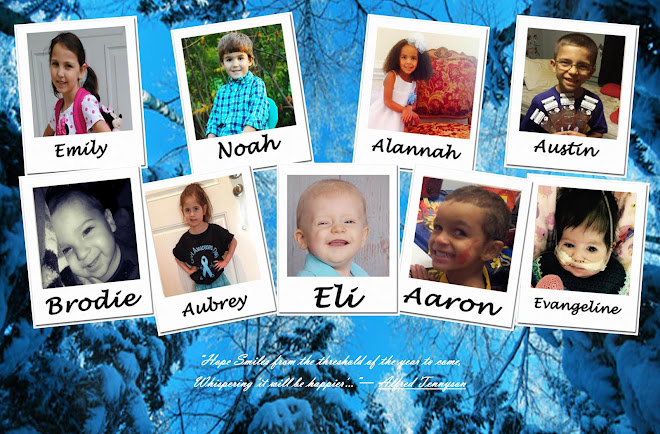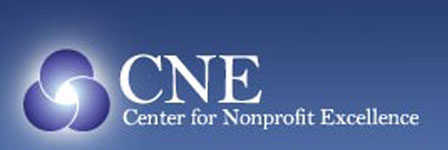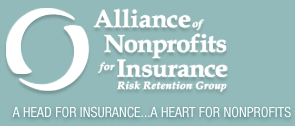Kathleen and James were expecting twin girls and one had congenital diaphragmatic hernia. They relocated to have the twins at The Children's Hospital of Philadelphia. Unfortunately, Allisyn Grace chose wings instead of feet. This hasn't stopped her parents to take action and educate others and now fundraise to further medical research for the hospital that tried to save Allisyn Grace's life.
The Texas Roadhouse in Logan, Utah between 4 PM - 10 PM will be helping, please consider going there if you are in the area on Thursday, March 31st. Click here to read more.
Doctors, Families Rally for Cure for Deadly Birth Defect
Parent's Perspective
KSDK.com News Report of Saint Louis Children's Hospital Press Conference
Tuesday, March 29, 2011
Wednesday, March 16, 2011
Turquoise Spread to the White House
On March 15, 2011 one of our amazing Turquoise Warriors had her "wish" from Make A Wish Foundation granted. Most 4 year olds would request a trip to Disney, meeting Dora the Explorer or even today, Hanna Montanna not this amazing girl. She wished to meet President Barack Obama.
Her mother reported the day was better than expected. They were able to bowl a frame at the White House Bowling Alley, Kennedy got to play with Bo, the Presidential Dog and she entertained the Secret Service! When she met the President, she gave him a hug and some Turquoise to wear. President Obama put on one of our wristbands we sent to this amazing family.
We know the President was probably very aware of congenital diaphragmatic hernia, thanks to all the efforts from families and individuals out there making requests of their states and localities to issue Proclamations and Resolutions for March 31st to be CDH Awareness Day for now 4 years in a row and Senate Resolution 204 passed without amendment.
Congenital Diaphragmatic Hernia Awareness Day is bi-partisan - please do not think this little girl's wish, or this posting is nothing more than celebrating further awareness of this devastating birth defect. Each effort, no matter how big or small is important.
As one of our parents said, "If you're cool enough to be wearing a Breath of Hope turquoise band...you're cool enough to hang with the President of the USA! He's sporting his NOW!! How exciting for the CDH world!!!"
Or just maybe he is cool enough to hang with all of us!
Tuesday, March 1, 2011
In Dire Circumstances, An Extraordinary Option - UofM 2,000th ECMO Patient
Breath of Hope received this email this morning. We are honored and will keep Victor, his family and as always these amazing health professionals in our thoughts and prayers!
- Breath of Hope
Good morning!
I am attaching a press release we sent out today about little patient Victor Bryan, of Saginaw, Mich. He was born in November with a severe CDH. He was our 2,000th patient to be treated with ECMO. His mom wanted to make sure we sent you the press release as she is a big fan of your site.
Please let us know if we can provide you with anything else in case you'd like to feature his story on your website or share it with your readers and supporters.
Thank you!
Margarita
Margarita Bauza Wagerson
Senior Public Relations Representative
C.S. Mott Children's Hospital & Von Voigtlander Women's Hospital
University of Michigan Health System
734-764-2220 (o)
313-520-2109 (c)
mbauza@umich.edu
http://www.med.umich.edu/
The University of Michigan Health System is celebrating a special milestone. In November, a twin boy named Victor was born with a congenital diaphragmatic hernia, a life-threatening complication. Victor, of Saginaw, became the 2,000th patient treated at the University of Michigan Health System with life-saving technology known as ECMO. ECMO was developed in the 1970s by a U-M surgeon named Robert Bartlett. It has saved more than 30,000 lives world wide. Read more below for Victor's story and to learn more about ECMO.
Thank you for considering for your coverage today.
Here is Victor's story:
http://www.uofmhealth.org/News/ECMO+2000th+patient
Video:
http://www.youtube.com/watch?v=2LLPHZsntPw
Photo slide show:
http://www.flickr.com/photos/umhealthsystem/sets/72157626167021782/show/
ECMO team treats its 2,000th patient, a twin boy born with a congenital diaphragmatic hernia
ANN ARBOR, Mich. -- Valerie Munguia-Bryan and Mario Bryan knew for months that one of their twin babies would be born with a devastating congenital defect. But they refused to give up hope.
The couple was referred to the U-M Health System by their hometown physician in Saginaw because of U-M’s expertise in repairing difficult congenital defects and for heart-lung support technology known as Extracorporeal Membrane Oxygenation, or ECMO, which is used to care for
desperately ill patients. Doctors expected the couple’s baby would need to be placed on ECMO to be kept alive from birth and through surgery.
ECMO was developed in the 1970s by U-M surgeon Robert Bartlett, now a professor emeritus. The technology - described by some of Bartletts colleagues as ‘extraordinary’ -- does the work of a patient’s failing heart and lungs for a period of weeks, sometimes months. That’s often long enough for the heart and lungs to rest and recover, increasing the patient’s chance of survival.
The technology has spread worldwide, with more than 40,000 cases treated and more than 24,000 lives saved. ECMO also has the extraordinary legacy of diminishing mortality in conditions where patients used to have no chance of survival.
Manuel and Victor Bryan were born Nov. 1, 2010 at U-M’s C. S. Mott Children’s Hospital. Manuel was born healthy.
As expected, Victor’s lungs were so underdeveloped that he was placed on ECMO immediately following birth. The following day, he was taken to surgery to repair his prenatally diagnosed congenital diaphragmatic hernia - to fashion a new diaphragm and to return his stomach, liver and intestines out of the upper cavity of the chest, where they were pushing up against the heart and lungs. Infants born with a congenital diaphragmatic hernia often have respiratory problems, with the severity varying by case from mild to life-threatening. In Victor’s case, it was life-threatening, so much so that Victor had two runs with ECMO. He is now recovering from a second surgery to close his abdomen.
“He is a fighter,” says his mom Valerie, who chose Victor’s name after her eye was caught by a University of Michigan poster invoking the school’s Hail to the Victors fight song. “He will be Victorious.”
Dr. Ronald Hirschl says that Victor would not be alive today were it not for ECMO technology.
“Victor had almost no diaphragm, he had small lungs, pulmonary hypertension, and blood was not going through his lungs… he needed the ECMO badly,” says Hirschl, M.D., Surgeon-in-Chief and Section Head of Pediatric Surgery at Mott Children’s Hospital and Victor’s surgeon.
“He is a perfect example of a child who wouldn’t be here today were it not for ECMO.
Victor has become a special baby for other reasons. He is the University of Michigan’s 2000th patient to be placed on ECMO.
The milestone is one that was watched closely by the team of doctors, researchers, nurses and administrators who run the ECMO program.
While the numbers worldwide far exceed 2,000, U-M is where the program was anchored, grew, became refined and developed into what it is today. U-M is the place where thousands of doctors and nurses continue to train to bring this technology to their own hospitals. It is at U-M that the
most difficult cases continue to come - not only for U-M’s depth of knowledge in ECMO technology and care of patients, but for life-saving programs that work in conjunction with ECMO, such as Survival Flight, which flies the sickest patients from around the country on
transportable ECMO technology, and the Fetal Diagnosis and Treatment Center, which identifies problems that can be treated from prior to birth and after.
“Victor is a very special baby,” says Bartlett, who retired from clinical practice in 2005 but continues to run the large laboratory where ECMO was developed, now focused on perfecting the technology. “We can’t wait for him to join his brother Manny at home so on.”
Bartlett says the future of ECMO after this 2000th patient milestone is brighter than ever. His lab continues to work on the development of artificial organs and surfaces to replace plastic tubing currently used to eliminate the need for blood thinners, which remains one of the biggest drawbacks of ECMO technology.
That breakthrough is just a few short years away. “We are very close.”
Victor shares a special legacy with the first successful ECMO baby, now an adult woman whose name is Esperanza or Hope in Spanish.
Esperanza’s mom gave birth to her in California 35 years ago. In the country illegally, the frightened mom left her baby orphaned in the California hospital where Bartlett worked at the time. Her life was saved by ECMO. Esperanza was later adopted by a local family. She is now
married with children, living in Missouri.
Hundreds of U-M staff members have worked on the ECMO project for over 30 years. The team has been not-so quietly cheering for Victor as he grows and overcomes hurdles. Nurses readily volunteer to hold his twin brother Manny every time Valerie visits Victor at Mott’s the Neonatal
Intensive Care Unit. They will readily admit they’re in love with the infants.
While Victor still has some hurdles to overcome, Valerie and her family savor the miracle that he is alive today thanks to ECMO technology. Dr. Bartlett who is retired from practice, visits Victor periodically to check on his progress. Valerie couldn't be happier she had a chance to thank Bartlett.
“I just wanted to make sure I could give him a hug - for saving my baby,” says Valerie.
Written by Margarita B. Wagerson
For more information, contact:
Margarita B. Wagerson, mbauza@med.umich.edu or
Mary F. Masson, mfmasson@med.umich.edu
734-764-2220
- Breath of Hope
Good morning!
I am attaching a press release we sent out today about little patient Victor Bryan, of Saginaw, Mich. He was born in November with a severe CDH. He was our 2,000th patient to be treated with ECMO. His mom wanted to make sure we sent you the press release as she is a big fan of your site.
Please let us know if we can provide you with anything else in case you'd like to feature his story on your website or share it with your readers and supporters.
Thank you!
Margarita
Margarita Bauza Wagerson
Senior Public Relations Representative
C.S. Mott Children's Hospital & Von Voigtlander Women's Hospital
University of Michigan Health System
734-764-2220 (o)
313-520-2109 (c)
mbauza@umich.edu
http://www.med.umich.edu/
The University of Michigan Health System is celebrating a special milestone. In November, a twin boy named Victor was born with a congenital diaphragmatic hernia, a life-threatening complication. Victor, of Saginaw, became the 2,000th patient treated at the University of Michigan Health System with life-saving technology known as ECMO. ECMO was developed in the 1970s by a U-M surgeon named Robert Bartlett. It has saved more than 30,000 lives world wide. Read more below for Victor's story and to learn more about ECMO.
Thank you for considering for your coverage today.
Here is Victor's story:
http://www.uofmhealth.org/News/ECMO+2000th+patient
Video:
http://www.youtube.com/watch?v=2LLPHZsntPw
Photo slide show:
http://www.flickr.com/photos/umhealthsystem/sets/72157626167021782/show/
For Immediate Release – March 1, 2011
In dire circumstances, an extraordinary option
ECMO team treats its 2,000th patient, a twin boy born with a congenital diaphragmatic hernia
ANN ARBOR, Mich. -- Valerie Munguia-Bryan and Mario Bryan knew for months that one of their twin babies would be born with a devastating congenital defect. But they refused to give up hope.
The couple was referred to the U-M Health System by their hometown physician in Saginaw because of U-M’s expertise in repairing difficult congenital defects and for heart-lung support technology known as Extracorporeal Membrane Oxygenation, or ECMO, which is used to care for
desperately ill patients. Doctors expected the couple’s baby would need to be placed on ECMO to be kept alive from birth and through surgery.
ECMO was developed in the 1970s by U-M surgeon Robert Bartlett, now a professor emeritus. The technology - described by some of Bartletts colleagues as ‘extraordinary’ -- does the work of a patient’s failing heart and lungs for a period of weeks, sometimes months. That’s often long enough for the heart and lungs to rest and recover, increasing the patient’s chance of survival.
The technology has spread worldwide, with more than 40,000 cases treated and more than 24,000 lives saved. ECMO also has the extraordinary legacy of diminishing mortality in conditions where patients used to have no chance of survival.
Manuel and Victor Bryan were born Nov. 1, 2010 at U-M’s C. S. Mott Children’s Hospital. Manuel was born healthy.
As expected, Victor’s lungs were so underdeveloped that he was placed on ECMO immediately following birth. The following day, he was taken to surgery to repair his prenatally diagnosed congenital diaphragmatic hernia - to fashion a new diaphragm and to return his stomach, liver and intestines out of the upper cavity of the chest, where they were pushing up against the heart and lungs. Infants born with a congenital diaphragmatic hernia often have respiratory problems, with the severity varying by case from mild to life-threatening. In Victor’s case, it was life-threatening, so much so that Victor had two runs with ECMO. He is now recovering from a second surgery to close his abdomen.
“He is a fighter,” says his mom Valerie, who chose Victor’s name after her eye was caught by a University of Michigan poster invoking the school’s Hail to the Victors fight song. “He will be Victorious.”
Dr. Ronald Hirschl says that Victor would not be alive today were it not for ECMO technology.
“Victor had almost no diaphragm, he had small lungs, pulmonary hypertension, and blood was not going through his lungs… he needed the ECMO badly,” says Hirschl, M.D., Surgeon-in-Chief and Section Head of Pediatric Surgery at Mott Children’s Hospital and Victor’s surgeon.
“He is a perfect example of a child who wouldn’t be here today were it not for ECMO.
Victor has become a special baby for other reasons. He is the University of Michigan’s 2000th patient to be placed on ECMO.
The milestone is one that was watched closely by the team of doctors, researchers, nurses and administrators who run the ECMO program.
While the numbers worldwide far exceed 2,000, U-M is where the program was anchored, grew, became refined and developed into what it is today. U-M is the place where thousands of doctors and nurses continue to train to bring this technology to their own hospitals. It is at U-M that the
most difficult cases continue to come - not only for U-M’s depth of knowledge in ECMO technology and care of patients, but for life-saving programs that work in conjunction with ECMO, such as Survival Flight, which flies the sickest patients from around the country on
transportable ECMO technology, and the Fetal Diagnosis and Treatment Center, which identifies problems that can be treated from prior to birth and after.
“Victor is a very special baby,” says Bartlett, who retired from clinical practice in 2005 but continues to run the large laboratory where ECMO was developed, now focused on perfecting the technology. “We can’t wait for him to join his brother Manny at home so on.”
Bartlett says the future of ECMO after this 2000th patient milestone is brighter than ever. His lab continues to work on the development of artificial organs and surfaces to replace plastic tubing currently used to eliminate the need for blood thinners, which remains one of the biggest drawbacks of ECMO technology.
That breakthrough is just a few short years away. “We are very close.”
Victor shares a special legacy with the first successful ECMO baby, now an adult woman whose name is Esperanza or Hope in Spanish.
Esperanza’s mom gave birth to her in California 35 years ago. In the country illegally, the frightened mom left her baby orphaned in the California hospital where Bartlett worked at the time. Her life was saved by ECMO. Esperanza was later adopted by a local family. She is now
married with children, living in Missouri.
Hundreds of U-M staff members have worked on the ECMO project for over 30 years. The team has been not-so quietly cheering for Victor as he grows and overcomes hurdles. Nurses readily volunteer to hold his twin brother Manny every time Valerie visits Victor at Mott’s the Neonatal
Intensive Care Unit. They will readily admit they’re in love with the infants.
While Victor still has some hurdles to overcome, Valerie and her family savor the miracle that he is alive today thanks to ECMO technology. Dr. Bartlett who is retired from practice, visits Victor periodically to check on his progress. Valerie couldn't be happier she had a chance to thank Bartlett.
“I just wanted to make sure I could give him a hug - for saving my baby,” says Valerie.
Written by Margarita B. Wagerson
For more information, contact:
Margarita B. Wagerson, mbauza@med.umich.edu or
Mary F. Masson, mfmasson@med.umich.edu
734-764-2220
Subscribe to:
Posts (Atom)








